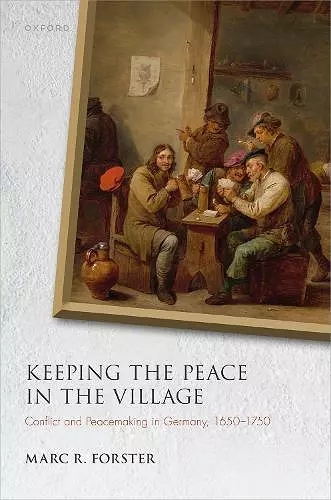Keeping the Peace in the Village
Conflict and Peacemaking in Germany, 1650-1750
Format:Hardback
Publisher:Oxford University Press
Published:26th Feb '24
Currently unavailable, and unfortunately no date known when it will be back

Keeping the Peace in the Village is a study of how rural society evolved in the century after 1650. Based on extensive research in German archives, particularly in local court records, the book examines how rural people sought peace in the aftermath of the Thirty Years' War. An understandable desire for peace and order co-existed with the reality of day-to-day conflicts common to any face-to-face community. An important consequence of the tension between conflict and the desire for peace was that people increasingly used local courts to help in resolving conflicts. One focus of the book is on the nature of conflicts in rural society. While the majority conflicts that appear in the archival record are between propertied men, women, farm laborers, and servants also found reasons for conflict and also brought their cases to court. Honor disputes were ubiquitous in this society and everyone defended their honor, in court, with their fists, and with their words. Slander cases made up a large part of each court session. Despite high levels of conflict, people placed great value on peace. Local people and state officials constantly searched for settlements of conflicts. These settlements were often negotiated informally, sometimes involved the intervention of intermediaries, and sometimes were reached formally through a court decision. Every court decision ended with an appeal for peace between the parties and a handshake and promise of friendship between the parties. Local courts and officials were well aware of the dangers of conflicts, especially if they were public, and tried to prevent the spread of gossip and rumor. Of course, peacemaking was not always successful, and feuds and on-going conflicts were common. The interplay of peacemaking and conflict at the local level, and the growing role of local courts, had important implications for the growth of state power. Although study examines developments in several small and lightly governed southwest German states, there is nevertheless clear evidence of state formation in the century after 1650. Key to this process was the way local people used local officials and local judicial institutions to solve local conflicts. The result was a kind of state formation from below. This study argues that a local perspective is vital for understanding the development of the state and provides evidence of popular support for a state that provided important services to rural people.
ISBN: 9780198898474
Dimensions: 240mm x 160mm x 22mm
Weight: 516g
240 pages